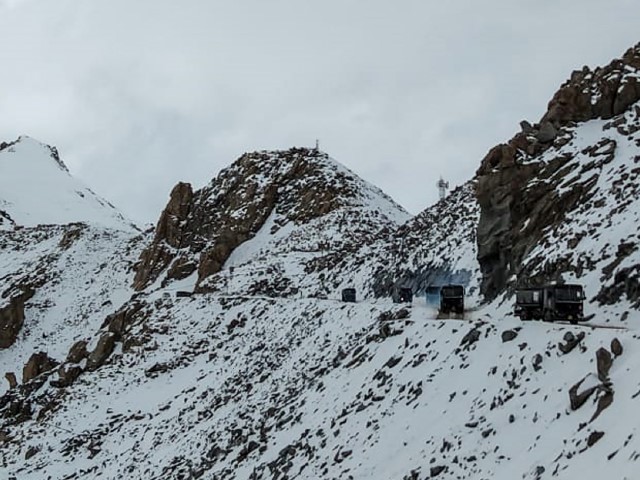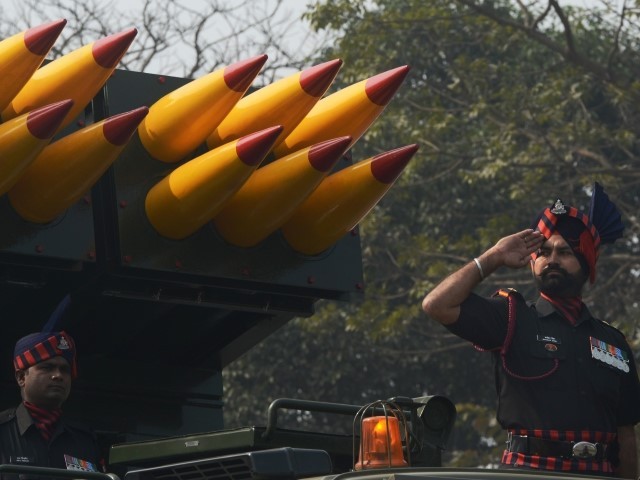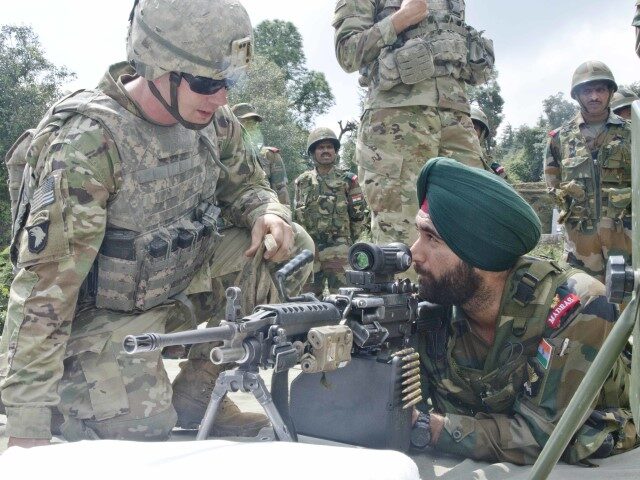Soldiers of the U.S. Army will deploy to a region of northern India’s Uttarakhand state — located 60 miles from India’s disputed Himalayan border with China — in October to participate in an annual joint military exercise with the Indian Armed Forces called Yudh Abhyas, the U.S. Army Pacific confirmed to Japan’s Nikkei Asia on Wednesday.
“The annual joint exercise Yudh Abhyas, which translates to ‘war practice,’ will be held in the South Asian nation’s Uttarakhand state from Oct. 18 to 31, the U.S. Army Pacific confirmed to Nikkei Asia,” the news magazine relayed on August 10.
The military drills are scheduled to take place in the Uttarakhand hill station of Auli, which perches atop the Himalayan mountains at an altitude of roughly 10,000 feet. The event will see Indian and American soldiers sharpen their warfare skills, specifically those required in a high-altitude climate, a “senior Indian Army officer with knowledge of the matter” told CNN on August 6.
Though Yudh Abhyas has been held annually since 2004, this year’s drill holds extra significance as India and China remain engaged in an unofficial border standoff in the western Himalayas that began in June 2020. Chinese People’s Liberation Army (PLA) soldiers ambushed an Indian Army border regiment in northern India’s Ladakh state on the night of June 15, 2020.

Indian Army vehicles drive on a road near Chang La high mountain pass in northern India’s Ladakh region of Jammu and Kashmir state near the border with China on June 17, 2020. India and China held top level talks on June 17 to “cool down the situation,” Beijing said, after a violent border brawl that left at least 20 Indian soldiers dead. (STR/AFP via Getty Images)
The surprise attack launched hours of brutal, hand-to-hand combat in Ladakh’s Galwan Valley that ultimately killed 20 Indian soldiers and an estimated 38 Chinese PLA troops. The melee’s repercussions continue to this day, as New Delhi and Beijing have yet to resolve the territorial dispute along their unmarked Himalayan boundary, known as the Line of Actual Control (LAC), that prompted the skirmish.
The Himalayan border standoff appeared to be going strong as recently as July 25 when the Times of India reported that New Delhi was planning to install a fresh batch of surface-to-air missile systems along its border with China by October.

Indian military personnel ride alongside missiles displayed during a parade to mark Republic Day in Kolkata on January 26, 2016. (DIBYANGSHU SARKAR/AFP via Getty Images)
“India’s capability to detect and destroy hostile fighters, strategic bombers, missiles and drones at long ranges will get another major boost when a new squadron of the S-400 Triumf surface-to-air missile systems becomes operational along the northern borders with China in the next two to three months,” according to the report.
“India has told the US that the S-400 systems … are an ‘urgent national security requirement’ to counter its hostile neighbors,” the Times of India noted at the time.
China, for its part, has also continued to build up a pronounced military presence along its border with India in recent months, indicating that Beijing has yet to back down from the Himalayan standoff.

COMMENTS
Please let us know if you're having issues with commenting.